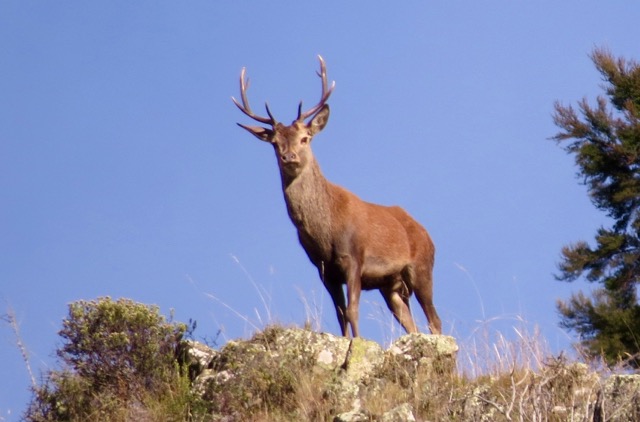
by Marc Bekoff Ph.D.
Primary school curricula there emphasise killing over compassion.
June 3, 2022 – “Psychology Today” US.
“Ample research backs up the finding that there is a direct link between acts of cruelty to animals and violence toward humans. This includes child abuse, domestic violence, elder abuse and other violent behavior….[a] study, published in 2013, found that 43 percent of those who commit school massacres also committed acts of cruelty to animals—generally against cats and dogs.”
The recent mass murders in US, i.e.Buffalo, N.Y. and Uvalde, Tex., once again brought to light the link between violence toward nonhuman animals (animals) and violence toward humans.1 New Zealand’s brutal war on non-native wildlife is fairly well-known internationally, and their focus on teaching and encouraging youngsters to kill these sentient beings as part of their formal, sanctioned education, has raised many concerns not only about their learning to harm and kill other animals but also about the long-term effects of engaging in these practices.2.3 It’s also become a family affair.
There have been some open and heated debates about the nature of New Zealand’s government-sanctioned educational resources and I’m pleased to summarize what they actually favor, based on a detailed study of these guidelines by Michael Morris of the Royal Agricultural University.
His rigorous analysis, “Primary school education resources on conservation in New Zealand over-emphasise killing of non-native mammals” is open access, so here are a few snippets that clearly show why there is a good deal of concern over teaching youngsters to disrespect, harm, and kill animals they’re taught not to like (references are from Morris’ essay).4
School children have been and are continued to be encouraged to hunt, trap, and drown possums, and then to humiliate their corpses (Morris, 2020; Tulloch, 2018).
Most accounts of abuse are from rural schools, though an Auckland primary school has also created controversy with one of its teachers rhetorically asking “Which are the animals that you want to kill the MOST?” (VICE, 2018).
A You Tube video begins with an adult male humiliating a rat corpse, while saying, ‘You didn’t see that one coming, did you?’ This video demonstrates to children how to set kill traps and some lip service is paid to animal welfare that it’s important to show “respect for all living animals” and be “humane”.
All government agencies and conservation NGOs, including the Ministry of Education, promote trapping or poisoning to eliminate non-native mammals as the only way to control them and to preserve biodiversity. There’s no discussion about using alternatives including changing human activities and attitudes, non-lethal contraceptive or gene drive techniques, more localized and targeted pest control, or translocation techniques such as Operation Nest Egg (Linklater and Steer, 2018; Morris, 2020).
What kind of damage do the non-native mammals actually do?
The Department of Conservation (DoC) (2018a) claims, “possums also eat eggs and chicks of endemic birds such as the kereru and kokako.” This is controversial because only a few instances of possums eating birds have ever been documented (Morris, 2020) and 50 years of stomach content analysis has not revealed any remnants of birds, bird eggs, or endangered invertebrates (Sweetapple et al., 2013 and references therein).

Morris nicely summarizes what we know about this relationship. He notes there is increasing evidence that this association is not merely a link (a correlation) but rather a causal relationship. He cites research by Anita Baldry, which found that children who merely witnessed animal abuse were more likely to become animal abusers, even if the children themselves had not been abused. Furthermore, seeing peers abuse animals was the strongest predictor for later animal abuse, followed by seeing parents abuse animals. The age at which children witness animal abuse is correlated with the age at which they become animal abusers themselves (Randour et al. 2019).
There also was a stronger relationship between witnessing animal abuse and becoming an animal abuser if the abuse was witnessed more than one time, or if the individual seen abusing animals was a friend, relative, parent, or sibling (Gullone 2014; Randour et al., 2019). Gullone offers an explanation that the causal relationship can be explained in terms of vicarious learning theory (learning through observation) in which seeing a trusted person doing something is more likely to lead to performing the same behavior. Trusted people include teachers, who should have a duty to model good behavior.
Morris also notes, “Children’s attitudes to animals is another predictor of later animal abuse. Adolescents who hold a world view of intrinsic human superiority, one that is implicit in the government teaching resources…are more likely to be animal abusers (Begue, 2020).”
I find it very interesting, but not all that surprising, that a study in Scotland found that teaching children about animal minds led to more knowledge about animal sentience and their ability to feel emotions. This is related to children showing more understanding and empathy toward other animals (Hawkins et al., 2017). Despite the fact that since 2014 New Zealand has legally declared nonhumans to be sentient beings, the killing goes on there as it does in other countries in which animals also are recognised as sentient, feeling individuals.
Morris’ research is very important and has received increasing attention because teaching youngsters to harm and to kill other animals is worrisome. While many youngsters seem to enjoy killing animals, not all do.
Educational curricula should emphasise compassion, empathy, kindness, and coexistence rather than killing other animals for fun or “in the name of conservation.” Given the strong evidence about the long-term psychological effects of violence toward other animals and violence toward humans, teaching youngsters that the life of every single individual matters would be a move in the right direction.
These sorts of lessons would be a win-win for all, nonhuman and human alike..3
References
1) For more information on this phenomenon called the “Link,” click here and here. Also see “Animal abuse probed in Uvalde and Buffalo suspected shooters’ pasts,” “Both Buffalo and Uvalde suspected shooters allegedly abused animals,” and note 3.
2) Imprinting Kids for Violence Toward Animals. (New Zealanders are putting well-known psychological principles to work.) For a complete list of references see “Jane Goodall Says Don’t Use 1080, Jan Wright Says Use More.”
3) New Zealand has extremely high rates of domestic violence. Also see “The Effects of Imprinting Kids to Kill Animals,” “New Zealand Kids Get Into Killing Animals and Love Doing It,” Eleonora Gullone, Animal Cruelty, Antisocial Behaviour, and Aggression: More than a Link, Palgrave Macmillan, 2012, and Michelle Clearly et al., Animal abuse in the context of adult intimate partner violence: A systematic review. Aggression and Violent Behavior, 2021, for an up-to-date summary. Taglieri, Joe. BUFFALO AND UVALDE MASS MURDERERS HAD DOCUMENTED HISTORY OF ANIMAL ABUSE. lady freethinker, June 1, 2022.
4) Part of the abstract reads: I reviewed educational resources published or endorsed by government agencies to determine compliance with these sustainability Guidelines. The resources reviewed promote the view that non-native mammals should be killed. Some resources go further in giving instructions to children on how to do this, and how to source kill traps. Children are provided with material designed to engender dislike towards non-native mammals, particu- larly possums. Resources conflate issues of conservation by tying it in with protection of tourism, orna- mental plants and primary industries. This encouragement of killing in environmental educational resources appears unique to New Zealand. It is discussed in light of increasing evidence that performing or witnessing animal abuse is a causal factor for future violence towards human and non-human animals.
Animal Legal Defense Fund. The Link Between Cruelty to Animals and Violence Toward Humans.
Ascione, Frank. Children And Animals: Exploring The Roots Of Kindness And Cruelty. Purdue University Press, 2005.
Bekoff, Marc. It’s Time To Stop Wondering if Animals Are Sentient—They Are.


The “pest” syndrome has been ingrained deeply into the New Zealand people. It de-sensitises people, especially impressionable youthful minds.
The role of groups like Forest and Bird Society, Department of Conservation, OSPRI and others has been to inject a “hate” mentality into people.
Start at an early age in the indoctrination and the effects can come out in society with a pro-violence attitude and even physically indulging in it to disastrous consequences.
NZ needs to teach youngsters to respect wild animnals.
While there is some logic to the arguments of this article, its author ignores some of the sound ecological reasons why some pest animals need to be culled and others hunted for meat. For example protection of our native forests and agriculture from the depredation caused by possums, deer, goats, pigs, wallabies, etc.
He also ignores the fact that humans are imbibed with self discipline and moral standards, that is why soldiers trained to kill do not all become mass murderers.
Recognising the link between animal abuse and human abuse it is important that children exposed to New Zealand methods of hunting for meat or pest control are taught from an early age to enjoy the hunt or the chase but respect the dignity of their quarry and not enjoy the kill. It is called hunting ethically.
Thank you for including this article, which references my research. While I acknowledge that possums, rats and stoats do damage native ecosystems, DOC and others who can’t see past the lazy solution of killing, deliberately exaggerate the damage through fear-mongering in order to engender hate. Recruiting school children as mercenaries of hate is a particularly cruel twist. Animal abuse and child abuse in one policy.
I am standing for mayor of Auckland for Animal Justice Auckland. Our biosecurity policy will be to use non-lethal control methods where control is needed, such as contraceptives, repellents and spay and release (for cats). We aim to preserve biodiversity by protecting green space, cleaning up the waterways and rewilding, not be scapegoating wild animals who never asked to be here.